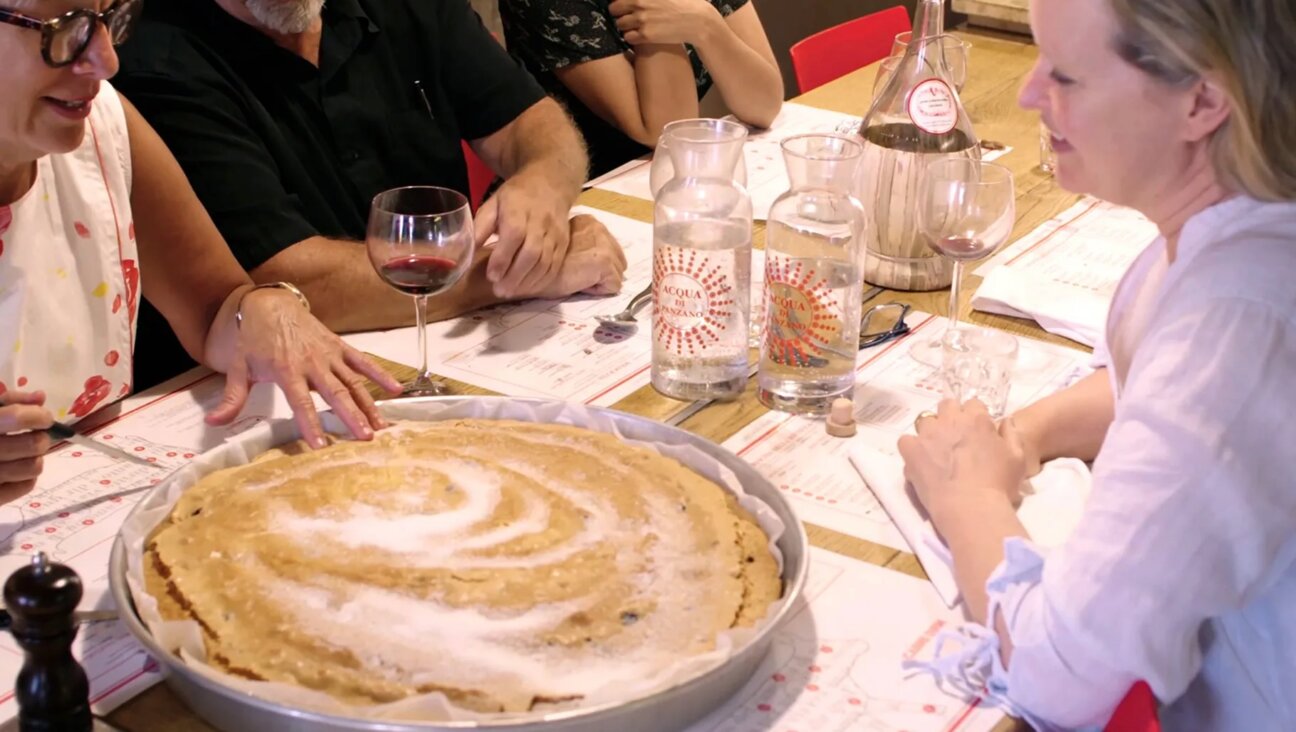Steamed White Fish With Cardoons And Lemon In Parchment

Graphic by Angelie Zaslavsky
New Cookbook: “The Book Of Greens” by Shannon Sarna
New Food: Cardoons
Cooking en papillote, which is steaming in parchment paper, is one of the simplest, clean methods around, and it is especially great for cooking fish. It is pretty fail-safe in terms of overcooking; and it imparts flavors and moisture wonderfully. You basically pile the fish and vegetables in the parcel, cook and voila, even a sauce is rendered in the packet.
Note: The cardoon needs to be blanched, or else it will oxidize.
Serves 4
4 (6-ounce] fillets of delicate white fish, such as halibut, flounder, or sole
4 ounces blanched cardoon stalks (see sidebar on preparing cardoons)
4 ounces cooked flageolet beans or other white bean
½ teaspoon finely chopped preserved lemon
4 green onions, green and white parts, trimmed and cut into quarters lengthwise
4 thin slices fresh lemon 2 sprigs thyme
4 sprigs flat-leaf parsley
8 green olives, pitted and coarsely chopped
¼ cup unsalted butter
½ cup dry white wine Fine sea salt
1) Preheat the oven to 425° F.
2) Place four 12-inch by 12-inch pieces of parchment on a work surface and center one piece of fish on each paper.
3) Season the fish with salt and divide the blanched cardoon stalks, beans, preserved lemon, green onions, fresh lemon, thyme, parsley, olives and butter among the fish portions, piling the ingredients on top of the fish. Finish with the white wine and season with salt.
4) Fold the parchment papers to seal the fish and liquid in the paper so that juices do not leak when cooking. Place the packets on a sheet pan and bake until the fish is cooked through, depending on thickness, 10–12 minutes for a thin, 1-inch piece and about 15 minutes for a 2–3 inch fillet.
5) Place the packets on individual plates and serve immediately. Make sure your guests are careful when opening because very hot steam will escape packet when opened.
OTHER GREENS THAT WORK IN THIS RECIPE: celery, Chinese celery
HOW TO PREPARE CARDOONS
One plant will yield 4 cups of cooked greens plus 8 cups of cooked stalks, when sliced into ½-inch pieces.
The stalks will oxidize once cut. When preparing them, place any cut pieces into a bowl of water with a lemon squeezed into the water to keep it from turning brown.
The leaves of the cardoon plant are too bitter for many people. To break down some of the intensity, I blanch then braise the greens in a bunch of butter, then use a bit of the greens in things like a frittata or pasta with cream. I serve creamed cardoon greens on toast with a bit of preserved lemon.
Cardoon stalks/ribs can be peeled with a peeler to remove thick fibrous outer layers. Cut the stalks into ½-inch slices and blanch in salted water, court bouillon (wine and vegetable stock), or any stock for 2 minutes. Drain and discard the blanching liquid. The cooked stalks are then ready to cook with and will not turn brown (oxidize). They will keep about 4 days, refrigerated.
Reprinted with permission from “The Book of Greens” by Jenn Louis, copyright © 2017. Photography by Ed Anderson. Published by Ten Speed Press, an imprint of Penguin Random House LLC.























